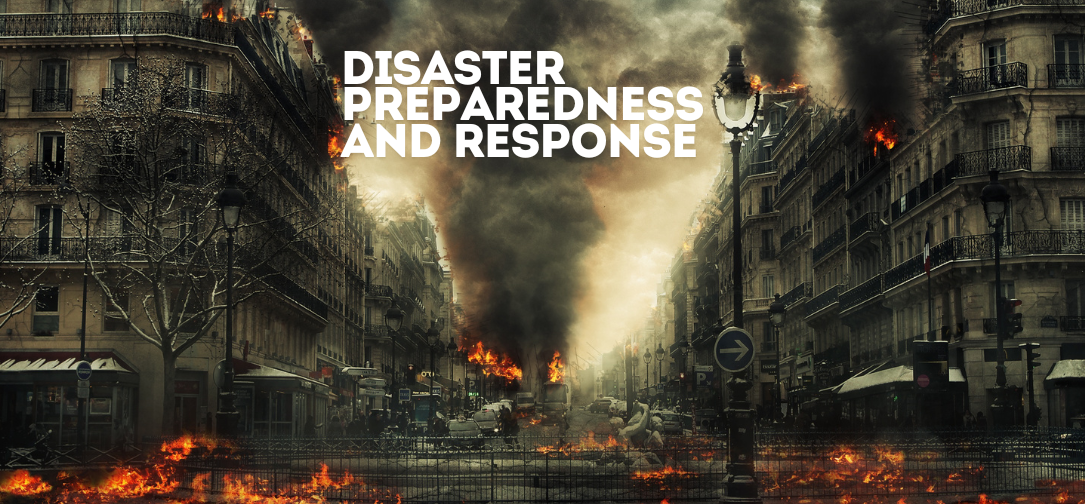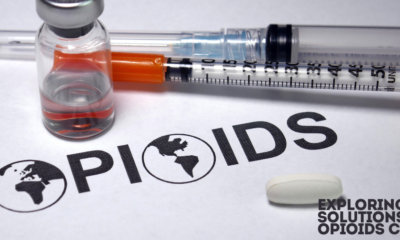Public Safety
Disaster Preparedness and Response: Ensuring Health and Safety in Emergencies

Disasters, whether natural or artificial, are abrupt events that disrupt communities, causing widespread destruction, dislocation, and severe human suffering. They may be earthquakes, floods, hurricanes, pandemics, terrorist attacks, or industrial accidents, each capable of threatening life, property, and the environment. The increasing frequency and intensity of such events worldwide highlight the importance of comprehensive disaster preparedness and response strategies to mitigate their impact. At the heart of disaster management is protecting human health and safety, which requires a multi-faceted approach involving governments, organizations, and communities. This article delves into the complexities of disaster preparedness and response, focusing on ensuring health and safety during emergencies and exploring the essential tools and methodologies employed.
Understanding Disaster Preparedness
Disaster preparedness refers to the systematic efforts taken before the occurrence of a disaster to reduce its risks and ensure a community is equipped to handle its consequences. The goal is to anticipate potential disasters and minimize their damage through proactive measures. Preparedness encompasses planning, training, community education, resource management, and institutional coordination.
Effective preparedness entails a deep understanding of the types of disasters a region is susceptible to, assessing the vulnerabilities of its population, and developing mitigation strategies tailored to these risks. For example, coastal areas prone to hurricanes must prioritize early warning systems, evacuation protocols, and infrastructure reinforcement, while earthquake-prone areas need building codes designed to withstand seismic activities.
Components of Disaster Preparedness
-
Risk Assessment and Hazard Identification
A crucial first step in preparedness is identifying and analyzing hazards that a region or community faces. This process, known as risk assessment, evaluates the likelihood of specific disasters occurring and the potential severity of their impact. Using historical data, geographic information systems (GIS), and climate models, authorities can create risk maps that provide insight into vulnerable areas. This information helps prioritize preparedness measures and allocate resources where they are needed most.
-
Emergency Planning
Emergency planning is a core component of disaster preparedness. This includes developing protocols for communication, evacuation, sheltering, and medical response. Emergency plans are often designed for scenarios like natural disasters or public health emergencies like pandemics. Critical aspects of emergency planning include:
Evacuation Procedures: Defining safe routes and transportation for mass evacuations.
Shelter Operations: Designating and equipping shelters for displaced populations.
Resource Allocation: Pre-positioning essential supplies such as food, water, and medical kits.
Communication Systems: Establishing robust communication channels to relay vital information to the public and emergency services.
-
Capacity Building and Training
Preparing a community for disasters involves capacity building through education, training, and simulations. First responders such as firefighters, police, and medical personnel need specialized training in disaster management, first aid, and search-and-rescue operations. In addition, community members must be educated about disaster risks, how to respond during an emergency, and the basic actions they can take to protect themselves and others.
Public awareness campaigns, safety drills in schools and workplaces, and hands-on training programs are some ways to foster a culture of preparedness. Involving local communities in these activities encourages a collaborative approach to disaster response.
-
Early Warning Systems
Early warning systems are critical in disaster preparedness by providing timely and reliable information about imminent disasters. Modern technology, such as satellite-based monitoring and automated alert systems, allows authorities to detect and track hazards like hurricanes, tsunamis, and wildfires. These systems provide governments and communities with the necessary lead time to take precautionary measures, including evacuation and sheltering, significantly reducing casualties.
-
Stockpiling and Resource Management
Pre-disaster stockpiling of essential resources is vital in preparing for emergencies. Stockpiles typically include medical supplies, non-perishable food, drinking water, fuel, temporary shelters, and communication equipment. Governments and humanitarian organizations often maintain emergency stockpiles in strategic locations to ensure timely distribution when disaster strikes.
In addition to material supplies, financial reserves are necessary to cover the costs of emergency response efforts. Building financial resilience through disaster insurance programs or emergency relief funds is an important step in ensuring swift recovery following a disaster.
The Role of Health and Safety in Disaster Preparedness
Health and safety are central to any disaster preparedness plan. Disasters cause physical injury, mental trauma, and can overwhelm health systems, making it imperative to integrate health considerations into preparedness measures. Governments, health agencies, and humanitarian organizations need to focus on the following aspects to ensure health and safety in emergencies:
-
Strengthening Health Systems
Strong healthcare systems are the foundation of disaster preparedness, particularly when it comes to responding to medical emergencies caused by disasters. Strengthening health systems involves ensuring that medical facilities are resilient to disasters, equipped with the necessary medical supplies, and staffed with trained personnel. Hospitals and clinics should have contingency plans in place for mass casualties, ensuring that they can continue providing services even during disasters.
Additionally, developing mobile health units or field hospitals can help provide critical care to affected populations when local healthcare infrastructure is damaged.
-
Mental Health Support
Disasters often result in severe mental health challenges for survivors, including post-traumatic stress disorder (PTSD), anxiety, and depression. Addressing mental health needs is an essential component of disaster preparedness. Governments and organizations must develop plans to provide psychological first aid, counseling, and long-term mental health support for affected populations.
Training first responders and healthcare workers in psychological care can help reduce the emotional and psychological impact of disasters, improving the overall resilience of communities.
-
Disease Prevention and Control
In the aftermath of disasters, there is a heightened risk of infectious disease outbreaks due to disrupted sanitation systems, overcrowding in shelters, and limited access to clean water. Cholera, dysentery, malaria, and respiratory infections are common post-disaster health threats. To mitigate this, health agencies must have strategies in place for rapid disease surveillance, vaccination campaigns, and public health education. Providing adequate sanitation, safe drinking water, and vector control measures can reduce the risk of outbreaks.
Response to Disasters: Protecting Health and Safety
While preparedness efforts help mitigate the impact of disasters, the actual response is what determines how well a community can recover from a disaster. Disaster response is the phase that follows the onset of an emergency and includes immediate efforts to save lives, reduce health risks, and provide basic needs such as shelter, food, and medical care.
-
Search and Rescue Operations
Search and rescue (SAR) operations are among the first activities initiated following a disaster. The primary objective of SAR is to locate, stabilize, and evacuate individuals trapped in dangerous or inaccessible areas. Whether it’s people trapped under debris following an earthquake or those stranded by floods, SAR teams often consisting of firefighters, paramedics, and specialized rescue personnel must be deployed swiftly to minimize loss of life.
Technological tools like drones, thermal imaging, and GPS tracking have significantly enhanced SAR efforts, improving the efficiency and reach of operations.
-
Medical Response and Triage
After rescue operations, immediate medical attention is required for the injured. Triage is used to prioritize patients based on the severity of their injuries, ensuring that those with life-threatening conditions receive care first. Medical response teams, comprising doctors, nurses, paramedics, and volunteers, often work under challenging conditions where resources are limited.
Setting up emergency field hospitals or mobile clinics is critical in the early stages of a disaster response, as existing health infrastructure may be damaged or overwhelmed. These facilities must be equipped to handle a wide range of injuries, from trauma to infectious diseases, while also managing essential healthcare services like maternity care.
-
Provision of Basic Needs: Shelter, Water, and Food
Displaced populations require safe shelter, clean drinking water, and food. Humanitarian organizations like the Red Cross, UNHCR, and national disaster management agencies play a crucial role in coordinating the delivery of essential supplies. Emergency shelters must be strategically located and equipped with bedding, hygiene products, and heating or cooling systems to provide comfort and safety to affected individuals.
Access to clean drinking water is critical to prevent dehydration and the spread of waterborne diseases. Water purification systems, bottled water, and sanitation facilities need to be rapidly deployed to disaster-hit areas. Food distribution, particularly to vulnerable groups like children and the elderly, is equally important in maintaining the health of the affected population.
-
Psychosocial Support and Mental Health Services
Providing psychosocial support is an important aspect of disaster response. Survivors of disasters may experience grief, trauma, and shock, requiring immediate emotional and psychological assistance. Mental health professionals, social workers, and trained volunteers offer psychological first aid and counseling services in shelters and healthcare facilities.
Ensuring long-term mental health recovery may involve setting up community support groups, providing access to therapy, and offering resilience-building programs for affected populations. Emotional support plays a vital role in helping individuals and communities recover after the devastation of a disaster.
-
Disease Control and Epidemic Prevention
The risk of disease outbreaks increases dramatically in the aftermath of disasters due to the disruption of water and sanitation services, overcrowding in shelters, and the breakdown of healthcare infrastructure. Public health authorities must immediately establish disease surveillance systems to monitor and report any signs of infectious diseases. Vaccination campaigns, particularly against diseases such as cholera, measles, and tetanus, are often launched as a preventive measure.
Emergency response teams should work to restore water supply and sanitation services as quickly as possible, while providing temporary sanitation facilities in areas with displaced populations. Vector control, such as distributing mosquito nets or spraying for disease-carrying insects, is crucial in regions prone to malaria or dengue fever.
Post-Disaster Recovery and Resilience Building
The recovery phase of disaster response involves rebuilding communities, restoring health services, and strengthening resilience to future disasters. Recovery efforts should prioritize restoring livelihoods, infrastructure, and social services while addressing the long-term health and mental well-being of affected populations.
-
Rehabilitation of Health Services
One of the key elements of post-disaster recovery is the rehabilitation of health services. Hospitals, clinics, and health centers that were damaged during the disaster must be repaired or rebuilt. This often includes restoring medical equipment, re-establishing supply chains for pharmaceuticals, and ensuring that healthcare personnel can resume their duties.
Rebuilding health services should also involve strengthening healthcare systems to withstand future disasters. This includes designing more resilient healthcare infrastructure, improving training for medical personnel, and establishing emergency preparedness plans for health facilities.
-
Rebuilding Livelihoods
Disasters often destroy livelihoods, displacing people from their homes and workplaces. The loss of income, homes, and agricultural production can have lasting impacts on community health and well-being. As part of disaster recovery, programs to rebuild livelihoods through economic assistance, job creation, and vocational training are critical. This economic recovery is closely linked to improving the physical and mental health of affected populations, as poverty is a significant determinant of health outcomes.
-
Strengthening Community Resilience
Building community resilience to future disasters is essential to minimize the impact of future emergencies. This involves not only reinforcing physical infrastructure but also fostering social resilience through education, empowerment, and community engagement. Programs that teach disaster risk reduction, promote environmental sustainability, and encourage social cohesion contribute to a culture of preparedness.
Communities that are informed, empowered, and involved in disaster risk reduction efforts are better equipped to withstand and recover from future disasters. Therefore, resilience-building initiatives are an integral part of both preparedness and recovery.
Conclusion
Disaster preparedness and response are crucial to safeguarding human health and safety during emergencies. As disasters increase in frequency and severity due to factors like climate change and urbanization, there is an urgent need to strengthen global, national, and local capacities to mitigate the risks and respond effectively.
The principles of disaster preparedness risk assessment, emergency planning, capacity building, and early warning systems are essential in reducing the impact of disasters and ensuring that communities are ready to act. Response efforts, including search and rescue, medical triage, disease control, and mental health support, play a critical role in saving lives and minimizing suffering in the aftermath of a disaster.
Ultimately, the goal of disaster preparedness and response is not only to protect lives but to foster resilience, enabling communities to rebuild stronger and more capable of facing future challenges. By integrating health and safety into every aspect of disaster management, governments, organizations, and individuals can ensure a more secure and sustainable future in the face of an increasingly uncertain world.
-

 Business5 days ago
Business5 days agoS&P 500 Soars in Best May in Decades Amid Tariff Relief and Nvidia’s Surge
-

 Healthcare6 days ago
Healthcare6 days agoAttention Economy Arms Race: Reclaim Your Focus in a World Designed to Distract You
-

 Immigration5 days ago
Immigration5 days agoTrump’s Immigration Crackdown: Legal Battles and Policy Shifts
-

 Business5 days ago
Business5 days agoUS Stock Market Soars in May Amidst Tariff Tensions and Inflation Worries
-

 Government5 days ago
Government5 days agoTrump Administration’s Government Reshaping Efforts Face Criticism and Legal Battles
-

 Business5 days ago
Business5 days agoTrump’s Tariffs: A Global Economic Reckoning
-

 Foreign Policy2 days ago
Foreign Policy2 days agoInside Schedule F: Will Trump’s Federal Workforce Shake-Up Undermine Democracy?
-

 Press Release2 days ago
Press Release2 days agoIn2space Launches Campaign to Make Space Travel Accessible for All




























